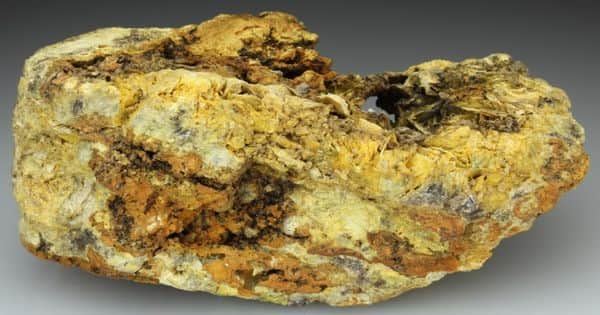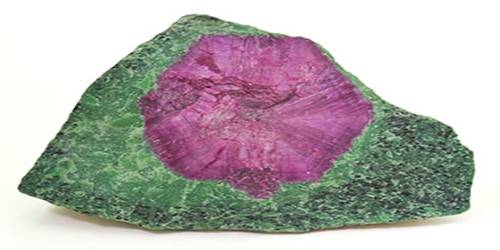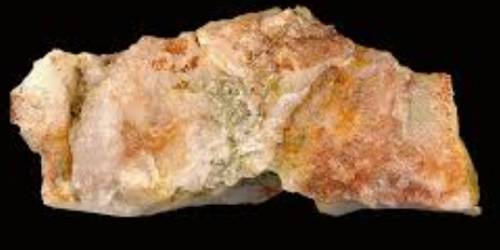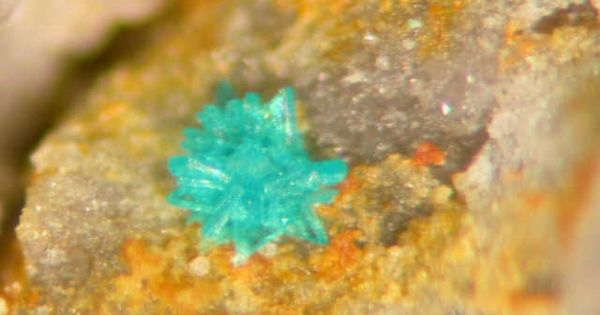Nadorite is a mineral with the chemical formula PbSbO2Cl. It is a mineral consisting of a brownish yellow lead chloride and stibnite. It is a mineral containing antimony, lead, oxygen, and chlorin, occurring in brownish orthorhombic crystals at Djebel-Nador in Algeria. The Nadorite crystals are also partly covered by what appears to be colourless Gypsum.
Nadorite is named after Djebel Nador in Algeria, where it was first identified in 1870.
General Information
- Category: Halide mineral
- Formula: (repeating unit) PbSbO2Cl
- Crystal system: Orthorhombic
- Crystal class: Dipyramidal (mmm)
- Color: Brown, brownish-yellow, yellow.
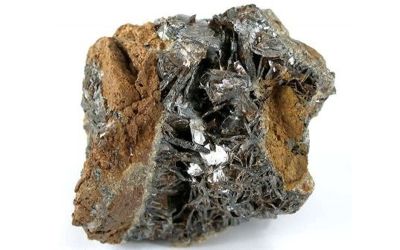
Properties
Nadorite is an orthorhombic brown or yellow mineral containing lead and tin. It crystallizes in the orthorhombic crystal system and is brown, brownish-yellow, or yellow in color, with a white or yellowish-white streak. The crystals vary in color from pastel yellow to brown. Tiny white-colorless micro-crystals of Cerussite are apparent on the Nadorite.
- Twinning: On {101}, nearly perpendicular (91°45′), common
- Cleavage: On {010}, perfect
- Fracture: Uneven
- Mohs scale hardness: 3 1⁄2 – 4
- Luster: Adamantine, Resinous
- Streak: White, yellow to yellowish white
- Diaphaneity: Translucent
- Density: 7
Geologic occurrence – As an alteration product of other antimony-bearing minerals in hydrothermal mineral deposits.
It occurs “as an alteration product of other antimony-bearing minerals in hydrothermal mineral deposits.” Djebel Nador and Djebel Debbar (both in the Constantine Province of Algeria) are its co-type localities. A rare mineral, Nadorite can be found in additional localities that include Morocco, England, Sweden, Germany, Bulgaria, Kazakhstan, and Namibia. Also found as an alteration product of jamesonite in Cornwall, England.
Association: Jamesonite, galena, sphalerite, bindheimite, s´enarmontite, valentinite, anglesite, cerussite, smithsonite, mimetite.
Information Source:
